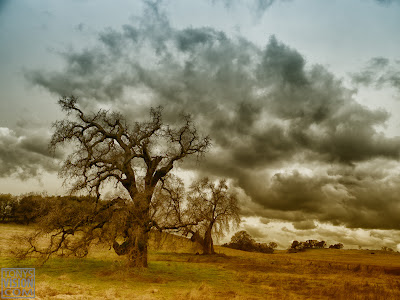4.8 Miles
Borrego-Palm Canyon, named for the Bighorn Sheep that frequent it and the palm oasis that comprise some 800 Fan Palms, drains the west side of the San Ysidro Mountains. These mountains form a 6,000 foot rampart on the west side of the Anza-Borrego Desert State Park. We arrived at the park via a pass through those mountains, and the change from verdant and lush agricultural land of Southern California to the Cholla, Yucca, and blooming Ocotillo of the desert was striking as we plunged down from the 4,000 foot pass to the town of Borrego Springs, 3,500 feet below in just a few miles.
The hike up the alluvial fan and into the mouth of Borrego-Palm Canyon took me into desert terrain much loved from way back at the beginning of my career as a geologist working in the desert of Central Nevada. Down here, though, in addition to striking geology and rocks coated with desert varnish, there is a greater variety of interesting plants, including the Ocotillo which are at their peak now, and several smaller blooming shrubs, including a bright red Penstemon. I was struck by the activity of bees, despite the fact that the winter and spring have been extremely dry. Another hiker on the trail pointed out a bee hive, clinging to the canyon wall 100 feet or so above the canyon floor. The walk was accompanied by nearly constant bird song, beginning with a covey of quail near the trailhead. A pause to rest for a few minutes would reveal small mammals scuttling among the boulders, and at one point, after fruitlessly scanning the steep canyon walls for Bighorn Sheep, happened on a lone ewe browsing the desert plants just off the trail.
But water was the most distinctive feature of the hike. Early on, the trail crossed a dry wash emanating from the canyon at the upper end of the fan. Very dry, and despite photos I'd seen showing flowing water at the oasis, I really didn't expect to see any on this very dry year. Nevertheless, about half way to the oasis, there was that pleasant burbling sound, and soon the sight of a healthy little stream tumbling around cobbles and falling from boulders into clear pools. Other signs of water were also around. In 2003 a huge flash flood ripped up palms and tumbled boulders to turn the once lush oasis into a scene of devastation. Much healing has occurred since then, but tumbled boulders and many trunks of large palms are scattered along the canyon bottom, where at one spot a boulder the size of a cabin rests on a trunk well up from the canyon bottom.
But the oasis is still impressive, with a cluster of at least 100 mature fan palms, skirted with decades of brown and rustling fans. From my perch on a large boulder within the oasis I enjoyed my liverwurst sandwich and watched the come and go of other visitors - this is a popular trail, and I heard several languages on the way up. According to the guidebooks, a second oasis can be found another mile or so up the canyon. But it is a boulder-hopping excursion, and I was worried about my old bones, and also pretty well used up from the rock and boulder hopping I'd already done, during many side excursions in my hunt for vantage points for photographs. I could see that the groups of other hikers were enjoying themselves, but realized that it is best that I hike alone - any companion would long ago have abandoned me, as with all of my pauses for photography, my GPS informed me that my overall speed made good on the way up the canyon was a measly 0.9 miles per hour.
Despite starting from the trailhead at about 8AM, the day was now warming up pretty well, my water was gone, and it was time to head back down the trail. But I did take the longer, alternate loop, which took me through an area of impressive cactus and Ocotillo, where I photographed a Cactus Wren, and was fortunate to come across that grazing sheep.
 |
| Ocotillo |
 |
| Within the palm oasis |
 |
| Cactus Wren |
 |
| Penstemon |
 |
| Ocotillo |














































